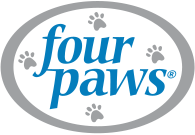Your Guide to Dog Coat Types & How to Groom Them
The same way humans have distinct hair textures, each breed has a unique dog coat type that distinguishes it from other breeds. While colors, patterns, and other coat qualities help us identify our pups, their fur serves a purpose greater than just cuteness. Between body temperature regulation and skin protection from cuts and scratches, there are multiple ways your dog's coat supports their everyday needs.
Understanding the many coat types in dogs is important when it comes to providing your furry friend the best grooming care for a healthy lifestyle!
Does My Dog Have Hair or Fur?
The great hypoallergenic debate tends to be a hair-versus-fur battle, but on a chemical level, fur and hair are actually the same! The biggest difference between hair and fur is how it grows, the length it grows, and the coat life cycle.
Hair grows in a single layer that goes through a longer growth cycle. While it grows longer than fur, hair falls out less frequently. Fur is still hair, but it commonly grows in a double layer and does not grow as long. It tends to be thicker and falls out more often than hair does. So, if you always find dog hair all over your couch, black pants, or freshly vacuumed carpet, your buddy likely has a beautiful coat of fur!
Despite popular belief, allergies are not a reaction to the dog fur type but rather the frequency at which it comes out. Dogs with fur are perceived to be worse for allergy sufferers because they shed more often. While it might seem that shorter hair means less grooming (and less shedding), that isn’t always the case—and why it is important to understand the different dog coat types.
Short Coats

You may hear the terms “short-coated” and “smooth-coated” used interchangeably, and that’s because this hair type is best described as both short and smooth! With hair that lies close to the body, the coat is sleek and shiny, almost like the dog is covered with silky skin rather than fur. While short-haired breeds are great for people who want relatively lower maintenance than other coat types, these pups still need regular grooming, especially during seasonal changes when hair thickness may vary.
Grooming tips: Grooming smooth-coated dogs is easy! While they don’t require daily brushing, we do recommend using a curry brush a few times a week, along with offering occasional baths to release excess hair.
Examples of Breeds with Short Coats:
- Beagle
- Doberman Pinscher
- Greyhound
- Labrador Retriever
- American Staffordshire Terrier
Medium Coats

Medium-coated breeds typically have fur that is about an inch long. With this dog coat type, the fur may stand slightly off the body, which could give a fluffier appearance. Depending on whether they have a single or double coat (an extra layer of fur beneath), dogs with medium fur don’t necessarily shed more just because they have longer hair.
Grooming tips: Medium-coated breeds require a moderate amount of brushing. To prevent the fur from matting, we recommend using a bristle or slicker brush every other day. This will also help distribute your dog’s natural oils throughout their coat for a shiny, smooth finish. When a dog with a double coat, such as a Siberian Husky, enters shedding season, they lose their undercoat. In this case, daily brushing is important to help prevent any itchiness or discomfort.
Examples of Breeds with Medium Coats:
- Corgi
- German Shepherd
- Golden Retriever
- American Eskimo
- Border Collie
Long Coats

There’s a reason they nicknamed the Komondor the “mop dog.” Long-coated breeds can have hair so long that it sometimes reaches the floor! When we think of long dog fur types, we often think of the distinctive coats on show dogs such as Afghan Hounds and Shih Tzus. While long, flowing locks certainly help these dogs stand out from the crowd, their coats do require a good amount of effort to maintain.
Grooming tips: Long-haired breeds require careful daily grooming, as they can easily develop tangles and a buildup of mats. Because of the level of grooming needed, pet parents of long-coated breeds often opt for “pet cuts,” where the long hair is tastefully bobbed for much easier maintenance.
Examples of Breeds with Long Coats:
- Pekingese
- Maltese
- Yorkshire Terrier
- Shetland Sheepdog
- Havanese
Wire Coats

As the name suggests, wire-coated dogs (also known as wirehaired dogs) have a wiry outer layer of rough hair. You’ll notice these coats feel quite different than the soft silkiness of a smooth coat. Even a properly groomed wire coat will be rough and bristly!
Grooming tips: Wirehaired dogs’ unique coats do not shed, making them a good choice for some allergy sufferers. Because wiry dog fur types don’t shed, the best way to groom a wirehaired dog is to “hand-strip” the coat. Hand stripping is an alternative process of removing a wirehaired dog’s excess coat by manually plucking out old or unruly hairs using your fingers. The hand stripping is done by holding the hair and pulling from the root, so a new coat can grow. You can ask a pet groomer to do this for you, then when you feel ready, you can try it at home.
Examples of Dogs with Wire Coats:
- Jack Russell Terrier
- Kerry Blue Terrier
- West Highland White Terrier
- Wire Fox Terrier
- Schnauzer
Curly Coats

Curly coats—also known as wavy coats—are characterized by those adorable curl patterns. Curly-coated breeds have hair ranging from soft waves to tight curls. The types of curls your dog has can vary within individual dog breeds, which is especially common with Poodle mixes. For this reason, grooming should be uniquely tailored toward each dog.
Grooming tips: Even though these breeds tend to be low shedders, grooming wavy-coated dogs does require special attention. Before brushing your wavy or curly coated dog, always spray them with some sort of conditioning spray to avoid hair breakage. A pin brush will help detangle and keep your pup’s curls looking bouncy with a natural shine.
Examples of Dogs with Curly Coats:
- Bichon Frise
- Curly-Coated Retriever
- Poodle
- Portuguese Water Dog
- Airedale Terrier
Hairless Dogs

Despite what their name might suggest, hairless dogs are still an important dog coat type. Even though they lack furry coats, hairless dogs still require proper grooming to maintain healthy skin. Hairless dog breeds’ skin, which would otherwise be protected by a layer of fur, faces more exposure to the natural elements. Because they lack fur as a resource, hairless dogs need extra protection from the sun and often require jackets in the winter.
Grooming tips: Just because hairless dogs have no coats does not mean they are always clean, so keeping a bath schedule can come in handy when you can’t feel the fur for dirt. With greater sun exposure, hairless dogs need all the moisture they can get! This means frequent baths with a skin-sensitive dog shampoo.
Examples of Dogs with No Hair:
- American Hairless Terrier
- Chinese Crested
- Xoloitzcuintle
- Peruvian Inca Orchid
- Argentine Pila Dog
Do Knot Worry!
Understanding coat types and how to groom a dog properly can take some time and experimentation. With a little grooming patience, you and your furry friend will soon find the perfect routine for maintaining their unique and healthy coat!










